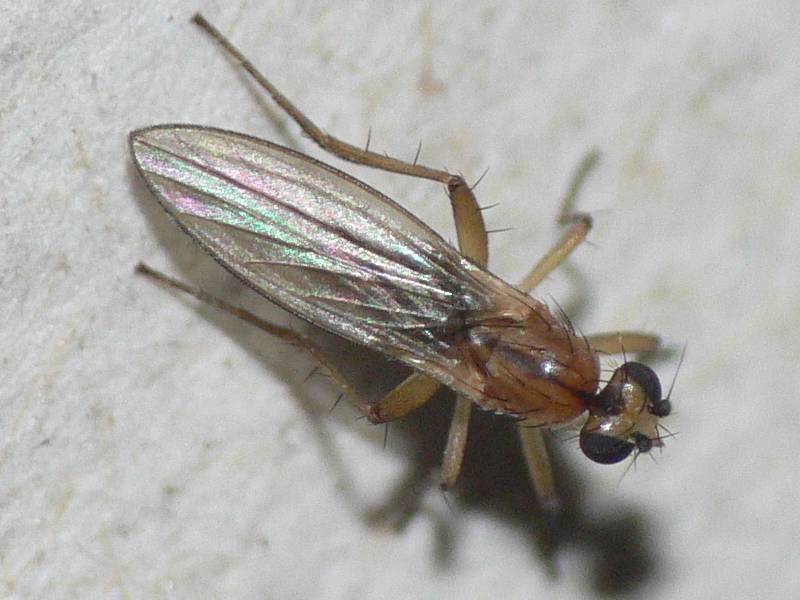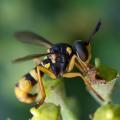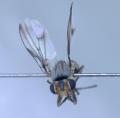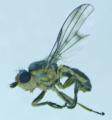Diptera.info :: Identification queries :: Diptera (adults)
Who is here? 1 guest(s)
|
Lonchopteridae from 27.10.-11.11.15
|
|
| Juergen Peters |
Posted on 23-11-2015 03:43
|
|
Member Location: northwest Germany Posts: 13973 Joined: 11.09.04 |
Hello, are the darker flies males? Because Lonchoptera bifurcata does not produce males in our region (northwest Germany), these are likely to be L. lutea, right? (I don't know anything about the 7 rarer Lonchoptera species listed for Germany.) Ca. 2,5-3 mm, at night in garden. Juergen Peters attached the following image:  [51.72Kb] Edited by Juergen Peters on 23-11-2015 03:46 Best regards, Jürgen -=-=-=-=-=-=-=-=-=-=-=-=-=-=-=-= Juergen Peters Borgholzhausen, Germany WWW: http://insektenfo... -=-=-=-=-=-=-=-=-=-=-=-=-=-=-=-= |
| Juergen Peters |
Posted on 23-11-2015 03:44
|
|
Member Location: northwest Germany Posts: 13973 Joined: 11.09.04 |
Two other dark ones from a hedge at day.
Juergen Peters attached the following image:  [70.02Kb] Best regards, Jürgen -=-=-=-=-=-=-=-=-=-=-=-=-=-=-=-= Juergen Peters Borgholzhausen, Germany WWW: http://insektenfo... -=-=-=-=-=-=-=-=-=-=-=-=-=-=-=-= |
| Juergen Peters |
Posted on 23-11-2015 03:47
|
|
Member Location: northwest Germany Posts: 13973 Joined: 11.09.04 |
A more pale one.
Juergen Peters attached the following image:  [49.58Kb] Best regards, Jürgen -=-=-=-=-=-=-=-=-=-=-=-=-=-=-=-= Juergen Peters Borgholzhausen, Germany WWW: http://insektenfo... -=-=-=-=-=-=-=-=-=-=-=-=-=-=-=-= |
| John Carr |
Posted on 23-11-2015 03:50
|
|
Member Location: Massachusetts, USA Posts: 10251 Joined: 22.10.10 |
Lonchoptera can be sexed by the last wing veins. Females have A1+CuA2 curved forward to end in CuA1. Males have the vein ending in wing margin. http://www.drawwi...hopteridae |
| Juergen Peters |
Posted on 23-11-2015 04:12
|
|
Member Location: northwest Germany Posts: 13973 Joined: 11.09.04 |
John Carr wrote: Lonchoptera can be sexed by the last wing veins. Females have A1+CuA2 curved forward to end in CuA1. Males have the vein ending in wing margin. http://www.drawwi...hopteridae Thanks, John! Very useful link! I had read about sexual dimorphism in wing venation of Lonchoptera, but with no given details. And I don't know if I make out the difference correctly on these photos with overlapping wings. 
Best regards, Jürgen -=-=-=-=-=-=-=-=-=-=-=-=-=-=-=-= Juergen Peters Borgholzhausen, Germany WWW: http://insektenfo... -=-=-=-=-=-=-=-=-=-=-=-=-=-=-=-= |
| John Carr |
Posted on 23-11-2015 13:28
|
|
Member Location: Massachusetts, USA Posts: 10251 Joined: 22.10.10 |
Juergen Peters wrote: John Carr wrote: Lonchoptera can be sexed by the last wing veins. Females have A1+CuA2 curved forward to end in CuA1. Males have the vein ending in wing margin. http://www.drawwi...hopteridae Thanks, John! Very useful link! I had read about sexual dimorphism in wing venation of Lonchoptera, but with no given details. And I don't know if I make out the difference correctly on these photos with overlapping wings. :| Many Diptera illustrations on that site were taken from Manual of Nearctic Diptera, which you can find here: http://www.esc-se...fcmono.php. Some of the keys are valid for Europe, or at least useful in Europe, and the key to families should work for all common species. |
| Juergen Peters |
Posted on 24-11-2015 01:43
|
|
Member Location: northwest Germany Posts: 13973 Joined: 11.09.04 |
John Carr wrote: Many Diptera illustrations on that site were taken from Manual of Nearctic Diptera, which you can find here: http://www.esc-se...fcmono.php. Thank you John, I have bookmarked it. Best regards, Jürgen -=-=-=-=-=-=-=-=-=-=-=-=-=-=-=-= Juergen Peters Borgholzhausen, Germany WWW: http://insektenfo... -=-=-=-=-=-=-=-=-=-=-=-=-=-=-=-= |
| Jump to Forum: |
















